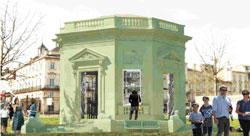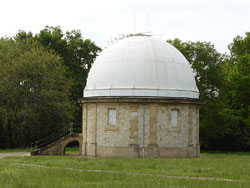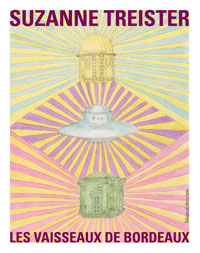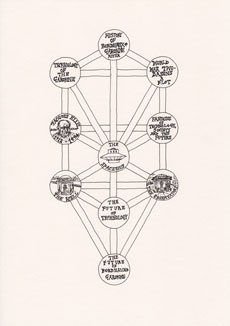|
Suzanne
Treister La commande artistique Garonne Proposition : Three
interdependent sculptures : and publication of a book
Before the invitation by Bordeaux Métropole I had been to Bordeaux only once, in 2009, to take part in the exhibition, 'Insiders - pratiques, usages, savoir-faire' at CAPC Museum of Contemporary Art. During this visit I made a trip to the Bassins à flots and the German submarine base, constructed during the German occupation in the Second World War by thousands of prisoners of war including many Spanish Republicans, which stayed in my mind. In my recent trips to Bordeaux, the first in April 2013, Bordeaux Métropole arranged various lectures and site visits. Examples from schedules (view images) : 1. Introduction to the 'Metropolitan project' of Bordeaux Métropole 2. Boat trip on the river Garonne (Bordeaux/Bec d'Ambès/Bègles/Villenave-d'Ornon) 3. Field trip along Garonne riverbanks 4. Conference about the history of the river Garonne by Didier Coquillas, doctor of history and scientific mediator 5. Visit to the Musée d'Aquitaine 6. Visit to the telecontrol center RAMSES (Régulation de l’Assainissement par Mesures et Supervision des Équipements et Stations/Regulation of sanitation measures and supervision of equipment and stations) 7. Visit to the reservoir La Grenouillère 8. Visit to the telecontrol centre Ausone (Automatisation des Unités de Surveillance et d’Optimisation des Nappes et de l’Eau/Automation of the units of monitoring and optimization of ground and water) and the Paulin reservoir 9. Visit to the German submarine base and the Bassins à flots 10. Meeting with Bordeaux Métropole services on the theme of flood control 11. Visit to the forteresse du Nord Médoc, with commentary by Dominique Lormier, historian and writer 12. Visit to Port Lagrange (city of Parempuyre/Bordeaux Métropole territory) As a result of these lectures and visits I became aware of how increasingly dependent the city of Bordeaux has become on technologies, both older and also very advanced technologies, in order to survive, to avoid the city being completely submerged underwater, and that this historical threat is constantly increasing along with the rise in water levels due to climate change.
During the boat trip along the Garonne I was also struck to hear of the existence of so many ships from the Second World War which were still submerged in the Garonne and to actually see the remains of some of them protruding above the water. After
the trip to the German bunker near Soulac I again I felt the proximity
of Second World War histories within the psychology of the city,
as if the memories were just under the surface of the water, like
the war boats, always prepared to re-emerge. This also connects to my family history, because my father who studied at the School of Political Science in Paris in the 1930s became an operative in the French Resistance in the Second World War – in both the occupied and unoccupied zones - and I am very interested in the history of the occupation, the memories of crimes of both the occupiers and the occupied. I thought about the idea of removing one of these warships from the Garonne river and transforming it into something else, as in an alchemical process, the transformation of one thing into another, to embody a physical process of change in the city. So I had the idea of transforming it into a spaceship. I visualised one of these decaying Second World War vessels being transformed - many decades after the German defeat - into a luminous spaceship, deriving from but no longer a war vessel, lifting history and transforming it into the present day and towards a hypothetical future, as a reminder of war and conflict but also as an encouragement towards a different type of future, a future to be imagined and constructed. Spaceships, both real, e.g. in terms of the US/Soviet space race, and as imagined in science fiction, embody fantasies of advancing technologies, technologies whose power can be utilised both in peacetime and for purposes of war and destruction, and these ideas are inevitably embedded in the sculpture, to act as a reminder of both the positive and potentially disastrous consequences of advances in science and technology. A spaceship, as a technological 'sci-fi' imaginary object, a manifestation of the fantasies of technology - and connected in its embrace of technology to the technological drives to save Bordeaux from the sea - can also signify the exhilaration and possibilities of change, speed and space, the space of the universe, outer space and can act to encourage thinking about a bigger picture beyond everyday life. It can also be an alluring image for teenagers thinking about what their future goals might be.
In a previous work of mine, HEXEN 2.0 (2009-11)1, which documented histories and ideological positions in relation to the pros and cons of advancing technological societies, I had come across the work of Jacques Ellul whose ideas I admired, in particular his ideas on technology which he wrote about in 'La technique ou l'enjeu du siècle'/'The Technological Society' (1954). "The Technological Society is one of the most important books of the second half of the twentieth century. In it, Jacques Ellul convincingly demonstrates that technology, which we continue to conceptualize as the servant of man, will overthrow everything that prevents the internal logic of its development, including humanity itself -- unless we take the necessary steps to move human society out of the environment that 'technique' is creating to meet its own needs." - From synopsis of English translation On the way to the submarine base, in the car with Marion from Bordeaux Métropole, I mentioned Ellul's name in relation to another subject and she told me that his son had been her history teacher at school and that Ellul was from Bordeaux and had taught at the university here. I was amazed and excited as I had not realised he was a Bordeaux man and I looked forward to discovering more on subsequent trips, maybe there was a personal archive or library of his books I could visit. On my return to London I read about how much Jacques Ellul loved his city and also that he had been involved in the French Resistance during the second world war. It then struck me as ironical that the city he loved so much would no longer exist if not for the complex technologies which were ideologically problematic for him. Naturally one finds these inbuilt contradictions everywhere, and I had found many in the ideas of the thinkers I had included in HEXEN 2.0 and tried to figure out ways of resolving some of these in my mind, especially the ideas of the anarcho-primitivists, or at least of presenting the information so that audiences could discuss the issues at stake in relation to how to think about possible futures and the future of technologies and their usage in social and political contexts. I wondered about finding a way of presenting Ellul's ideas more overtly in the city, of bringing about a confrontation between these conflicting issues to do with technology which had been preoccupying me. I had the idea to make a pavilion in the centre of Bordeaux, on the promenade/quayside, which would be a library of his works. The
pavilion would be in a style of architecture sympathetic to the
historical architecture of Bordeaux and I felt that the Belvedere
pavilion located on the grounds of Le Petit Trianon at the Palace of
Versailles would make the perfect model.2 The Ellul pavilion would be
like a camouflage, a mirror of the Bordeaux historical style, made
with contemporary materials. I envisioned at the centre of this pavilion a well leading down to the waters of the Garonne, waters which without the help of technology would flood upwards to emerge as a fountain into the pavilion and destroy the books, thus creating and representing a physical tension of ideas. Like a dormant volcano, to trigger a response from the audience, whilst encouraging passersby to engage in the writing of one of Bordeaux's greatest thinkers. This was the beginning of the idea for The Well/Jacques Ellul Library. The Well will contain many relevant books by Ellul and also specific key texts by writers with related critical concerns regarding technology and civilisation, e.g. Martin Heidegger, Walter Benjamin, Theodore Adorno and Max Horkheimer, Lewis Mumford, Joseph Weizenbaum, Ivan Illich, Guy Debord, Neil Postman, Langdon Winner, Fredy Perlman, John Zerzan, David Watson, Hakim Bey, Bob Black, Derrick Jensen and Lawrence Jarach. There will be information on how to borrow these books from the University or elsewhere. For the display of the books there will be four internal and four external vitrines, eight in total. One of these vitrines will be reserved for a temporary changing display. This vitrine will be curated in collaboration with Patrick Chastenet, Professor of Political Science at the Centre Montesquieu de Recherche Politique, Université Montesquieu - Bordeaux IV and President of l'Association Internationale Jacques Ellul (AIJE). This curated vitrine will show reprints and new translations into other languages of Ellul's works and new related publications by writers from around the world. The responsibility for the process and task of maintaining this living section of the library will be handed down indefinitely through the generations under the aegis of the University of Bordeaux. In this way writers, philosophers and theorists who are responding to their own contemporary issues of technology and society, in let's say 100 or 500 years time, and if the current society will allow it, may have their works displayed in the pavilion, perhaps in another format than a book, or perhaps the format of the book will survive? And if not then The Well will eventually also become a memorial to a lost technology. The Well/Jacques Ellul Library will also be a potential site for events hosted by Patrick Chastenet and others, since it is an open space for the public to use. On the exterior of The Well will be an information text. The text will include a short biography of Jacques Ellul mentioning also the other writers, information about the well at its centre, about the overall Garonne project of which it is a part, reference to the other two components of my project (The Spaceship and The Observatory) and to the accompanying book, Les Vaisseaux de Bordeaux, which can be seen/purchased at the nearby CAPC-musée d'art contemporain de Bordeaux and elsewhere. The proposed location is in the Parc aux Angeliques. Just on the opposite bank of the Garonne, in Place des Quinconces, are already located statues of two key Bordeaux writers, statesmen and thinkers, Montaigne and Montesquieu. The nearby addition of a pavilion dedicated to the ideas of Jacques Ellul would make a perfect triangle and with the indefinite updating of the Ellul library by the University of Bordeaux, would be a vehicle for the dissemination of perpetually current social and political ideas into the future.
In order to represent and allow further exploration of ideas embedded in The Spaceship, ideas to do with science fiction, outer space, the universe, theories of future technologies, of dystopias and utopias; and both current and historical debates about advanced technological societies embedded in The Well and narratives of possible futures, I had the idea for a third part of the work, to make a physical triangle, a triptych, across the city and on both sides of the river, to embody these ideas and discussions. This would be a second pavilion, higher up in the city and on the other side of the Garonne, which would be a library of science fiction. It would include both current and historical works from a diverse range of science fiction writers, some of whom were/are also political thinkers. It seemed perfect to have at the centre of this pavilion a telescope, so that audiences can physically see into outer space at the same time as reading from the books. This was the idea for The Observatory/Science-Fiction Library. Instead of building a new pavilion from scratch it is proposed to use an existing observatory, the Grand Equatorial de l'Observatoire de Floirac. The Observatory Library will contain books by Mary Shelley, Edward Bulwer-Lytton, Jules Verne, Jerome K. Jerome, H. G. Wells, Jack London, Yevgeny Ivanovich Zamyatin, Aldous Huxley, George Orwell, John Wyndham, Clifford D. Simak, Ayn Rand, Robert A. Heinlein, A. E. van Vogt, Pierre Boulle, Anthony Burgess, Arthur C. Clarke, Stephen Baxter, Doris Lessing, Isaac Asimov, Frank Herbert, Ray Bradbury, Stanislaw Lem, Kurt Vonnegut, Philip K. Dick, Philippe Curval, Ursula le Guin, Joanna Russ, Larry Niven, Margaret Atwood, Samuel R. Delany, William Gibson, Bruce Sterling, Neal Stephenson, Ann Leckie, David Mitchell, Ada Palmer and Malka Older. NB.
Either on the walls or nearby each of the 3 works will be an
information panel which will include information about all three
components of the project and will mention the book which will be
available at the nearby CAPC-musée d'art contemporain de Bordeaux and
elsewhere.
It will contain drawings, diagrams, watercolours and digital works which will illuminate the spaces and relationships between the ideas and content of the 10 circles in the project diagram below, which are: Histories of Bordeaux and the Garonne; Technology of the Garonne; World War Two Submarine Base; Jacques Ellul - Bordeaux philosopher, lawyer, sociologist and Christian anarchist 1912-1994; Fantasies of technology, society and the future; Spaceships; The Well/Jacques Ellul Library (an eco/nature/anarcho-primitivism library with a well at its centre); The Observatory/Science-Fiction Library (A science fiction library with a telescope in the centre); The future of technology; The future of Bordeaux and the Garonne. The project title, The Spaceships of Bordeaux, allows all three works to be seen as entities which have descended into Bordeaux, to raise the question of their function and of the complex issues to do with technology and society which are embedded in all of the works and the relationships between the three works.
Notes 1. HEXEN 2.0 Suzanne Treister 2009-2011 HEXEN 2.0 looks into histories of scientific research behind government programmes of mass control, investigating parallel histories of countercultural and grass roots movements. HEXEN 2.0 charts, within a framework of post-WWII U.S. governmental and military imperatives, the coming together of scientific and social sciences through the development of cybernetics, the history of the internet, the rise of Web 2.0 and increased intelligence gathering, and implications for the future of new systems of societal manipulation towards a control society. HEXEN 2.0 specifically investigates the participants of the seminal Macy Conferences (1946-1953), whose primary goal was to set the foundations for a general science of the workings of the human mind. The project simultaneously looks at diverse philosophical, literary and political responses to advances in technology including the claims of Anarcho-Primitivism and Post Leftism, Theodore Kaczynski/The Unabomber, Technogaianism and Transhumanism, and traces precursory ideas such as those of Thoreau, Warren, Heidegger and Adorno in relation to visions of utopic and dystopic futures from science-fiction literature and film. Based on actual events, people, histories and scientific projections of the future, and consisting of alchemical diagrams, a Tarot deck, photo-text works, pencil drawings, a video and a website, HEXEN 2.0 offers a space where one may use the works as a tool to envision possible alternative futures. http://www.suzannetreister.net/HEXEN2/HEXEN_2.html 2.
"The Petit Trianon and its park are indissociably linked to
the memory of Queen Marie-Antoinette. She is the only queen to have
imposed her personal taste on Versailles. Sweeping away the old
court and its traditions, she insisted on living as she wished.
In her Trianon domain, which Louis XVI gave her in 1774, she found
the heaven of privacy that enabled her to escape from the rigours
of court etiquette. Nobody could come there without her invitation.
The reinstatement of the compound which shows most of the former
arrangement: enclosing walls, gates, grills and saut-de-loup [Wolf's
jump] - shows the Petit Trianon domain as a guarded, preserved place,
centred on its château. This arrangement shows the eclecticism
and refinement of Marie-Antoinette, an art of living linked to free
thinking, for the spirit of the Enlightenment was far from absent
here." |



